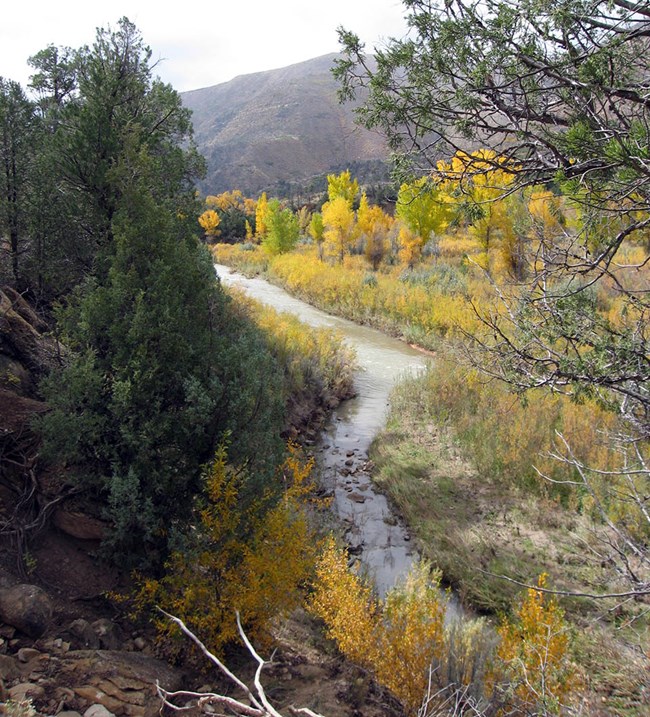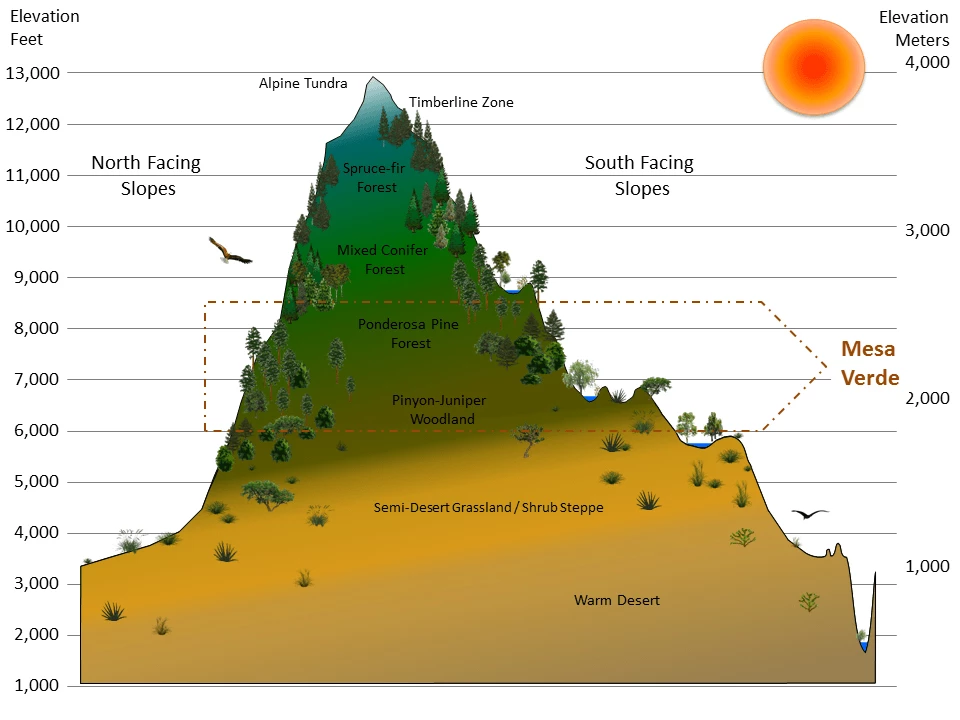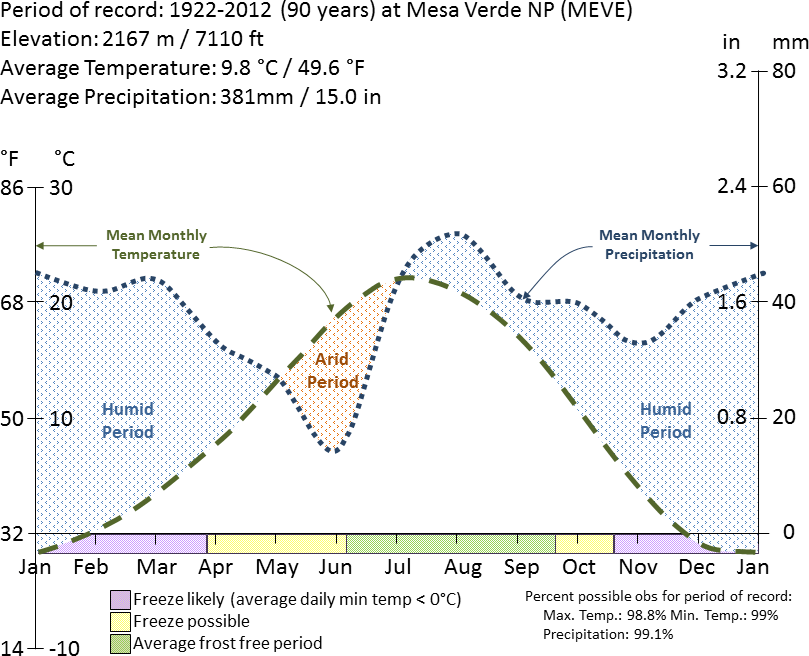
NPS / SCPN
Mesa Verde National Park encompasses 51,982 acres (21,000 ha) in southwestern Colorado. First established in 1906 to protect over 4,800 Ancestral Puebloan archeological sites, the park's enabling legislation was amended several times to expand the boundaries and enhance the park's purpose to include the preservation of the forests, wildlife, and other natural features and values and to exclude incompatible uses.
Mesa Verde's significance and worldwide value was recognized by its selection as a World Cultural Heritage site in 1978.
Mesa Verde NP is located on a cuesta (a ridge formed by gently tilting sedimentary rock layers) incised by many deep, long canyons separating numerous narrow, parallel mesas in the transitional zone between the arid south and the temperate/alpine Rocky Mountains to the north.
Major vegetation communities found at Mesa Verde NP include pinyon-juniper woodlands, semi-desert grasslands, and and shrublands dominated by Gambel oak and serviceberry.
Grazing has been excluded from the park for 60 years, and as a result, many plant and animal species that have disappeared or become very rare in the surrounding region still exist at Mesa Verde, including many species of rare and endemic plants. Five amphibian, 200 bird, 5 fish, 74 mammal, 16 reptile, and several hundred invertebrate species have been documented in the park.
Although the Mancos River is the only perennial stream, other water sources, such as seeps, springs, pot holes and historic wells, are relatively abundant. Under the Clean Air Act, Mesa Verde is designated as a Class I airshed. Because of its remote location and dry climate, the dark night skies make Mesa Verde a great location for viewing stars and planets.
Monitored Here
Species Lists
Select a Park:
Select a Species Category (optional):
Visit NPSpecies for more comprehensive information and advanced search capability. Have a suggestion or comment on this list? Let us know.
Life Zones
Mesa Verde NP ranges in elevation range from 6,012 to 8,571 feet (1,833–2,613 m) and spans four life zones: the Semi-Desert Grassland/Shrub Steppe, Pinyon-Juniper Woodland, Ponderosa Pine Forest and Mixed Conifer Forest. The park experiences an average annual precipitation of 17.8 inches (453 mm ).

Climate Summary Chart
Charts are an effective way to summarize and graphically represent climate variables. The following chart is based on the diagrams developed for vegetation studies by Walter and Lieth in 1967. Visit our climate page for more information.

Reports & Publications
Inventories are point-in-time surveys that help us learn about the resources in our parks. Information obtained through the Southern Colorado Plateau Network’s inventories of park resources helped to establish a base level of data, which has served as a starting point for our natural resource monitoring.
Source: NPS DataStore Saved Search 3515 (results presented are a subset). To search for additional information, visit the NPS DataStore.
Source: NPS DataStore Saved Search 3471 (results presented are a subset). To search for additional information, visit the NPS DataStore.
Source: NPS DataStore Saved Search 3280 (results presented are a subset). To search for additional information, visit the NPS DataStore.
Last updated: October 21, 2022
